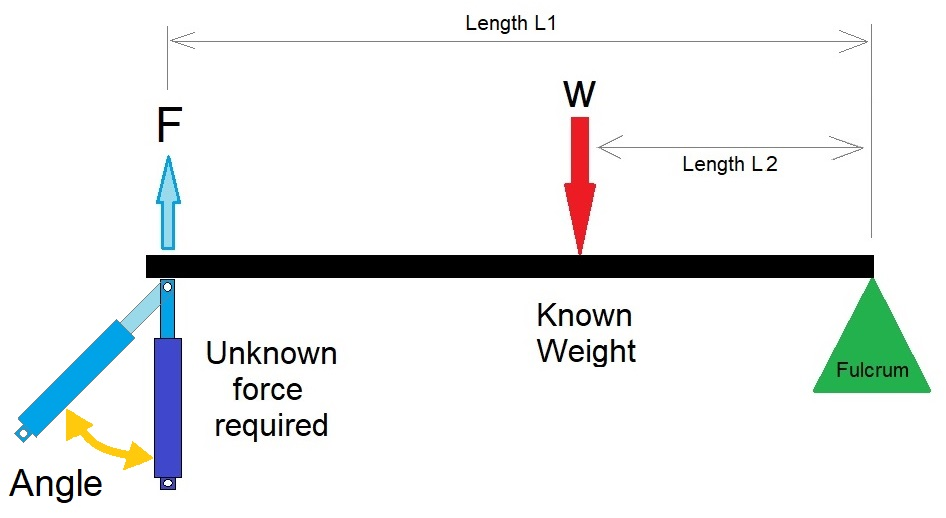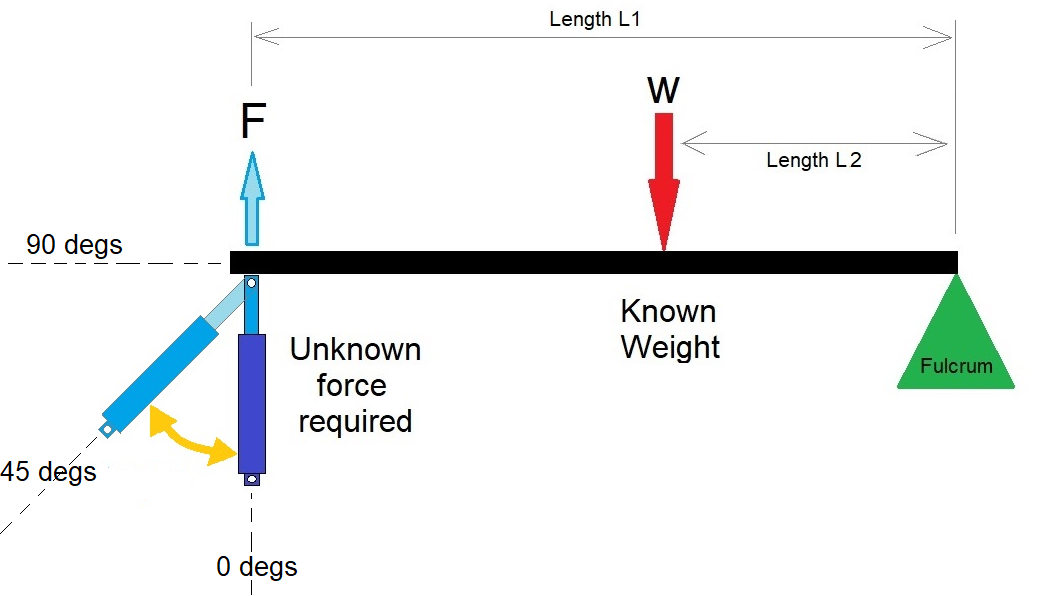How to calculate a 2nd Class lever where the pushing or pulling force is on an angle

If you have already tried our 2nd class lever calculator and read the article we write about how to calculate the force required for a second class lever (Link below), you will notice this only applies when the force that is been applied happens to be perpendicular to the lever arm.
2nd Class lever article and Calculator
When a force is applied at an angle to the lever arm, it can be resolved into two components: one perpendicular to the lever arm and one parallel to the lever arm. The perpendicular component of the force will contribute to the torque that moves the load, while the parallel component will simply push the lever arm sideways.
To calculate the force required to move the load in a second-class lever when the force is applied at an angle, you need to use trigonometry to determine the perpendicular component of the force.

How to calculate the force required?
the formula for calculating the force required to lift a load using a second-class lever with the force applied at an angle.
The formula is:
F = (w1 * L2) / (L1 * sin(theta))
where:
- F is the force required to lift the load, in newtons
- w1 is the weight of the load, in newtons
- L1 is the distance from the fulcrum to the load, in meters
- L2 is the distance from the fulcrum to the force, in meters
- theta is the angle between the force and the horizontal plane, in radians

What would be a typical application for a 2nd class lever where the pushing force is on an angle?
A typical application for a second-class lever where the pushing force is on an angle is a wheelbarrow. In a wheelbarrow, the load (usually dirt or other heavy material) is placed in the bucket, which is located on one end of the lever (L1), and the person pushing the wheelbarrow exerts force on the handles, which are located on the other end of the lever (L2).
The angle between the force exerted by the person and the horizontal plane is usually not 90 degrees, but rather some acute angle. This means that the force required to lift the load in the bucket is less than the weight of the load itself. The longer the handle (L2) and the smaller the angle of the force, the less force the person needs to exert to lift the load.
By using a second-class lever with the pushing force on an angle, the person pushing the wheelbarrow is able to move a heavier load with less effort than if they were simply lifting the load directly.
What are the advantages for a 2nd class lever where the pushing force is on an angle?
The advantages of using a second-class lever where the pushing force is on an angle include:
- Mechanical Advantage: A second-class lever provides a mechanical advantage that enables a person to lift a heavier load with less force. By placing the load closer to the fulcrum and exerting force farther away from the fulcrum, the person is able to magnify the force they exert on the lever. This is especially advantageous when lifting heavy loads or performing tasks that require a lot of force.
- Control: By placing the force at an angle to the horizontal plane, the person is able to have more control over the movement of the load. The angle of the force allows the person to direct the force in a specific direction, which can be useful in situations where the load needs to be moved around obstacles or in tight spaces.
- Reduced Strain: Using a second-class lever with the pushing force on an angle can reduce the strain on the person's body. By using the lever, the person is able to lift the load with less force, which can reduce the risk of injury or strain.
Overall, using a second-class lever with the pushing force on an angle can improve efficiency, control, and safety when lifting heavy loads or performing tasks that require a lot of force.